The Catharsis of Midsommar
January 27, 2020
There will be spoilers in this because I assume that my main audience (Ms. Shapiro) does not want to see Midsommar as it is a horror movie.
Midsommar, as described by director Ari Aster, is a “fairy tale, more than anything else.” However, this fairy tale is darker than your average Disney film. It follows Dani, her distant boyfriend Christian, and his friend group on a trip to an isolated Swedish village for a festival that only occurs every 90 years.
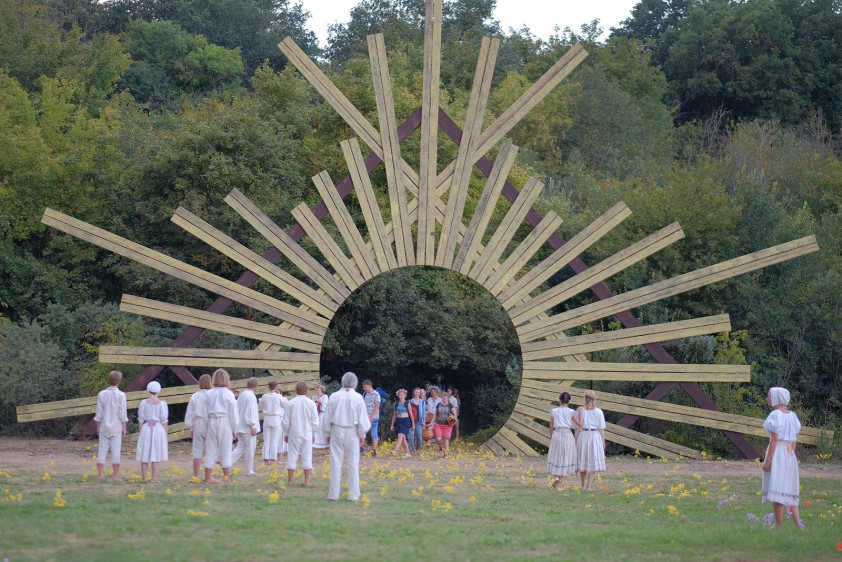
Protagonist Dani Ardor is coming off of the murder-suicide her mentally ill sister committed that killed her entire immediate family. Her only support system is her boyfriend of four years, Christian Hughes. He’s not super helpful either, as he’s wanted to break it off with her for at least a year of their relationship. He’s cold, gaslights her constantly, and cares for her out of obligation and guilt rather than love.
It’s that obligation and guilt that nudges Christian to invite Dani to the trip to Sweden he’d been planning with his friends for months. The village they arrive at is the hometown of one of Christian’s friends, Pele. The village is isolated from society, and deep set in traditions that are definitely… unconventional. This includes love potions made from pubic hair and menstrual blood, cliff-diving suicide of elders over seventy-three, and the crowning of a May Queen who determines the last sacrifice in a ritual burning of nine people to cleanse evil from the commune.
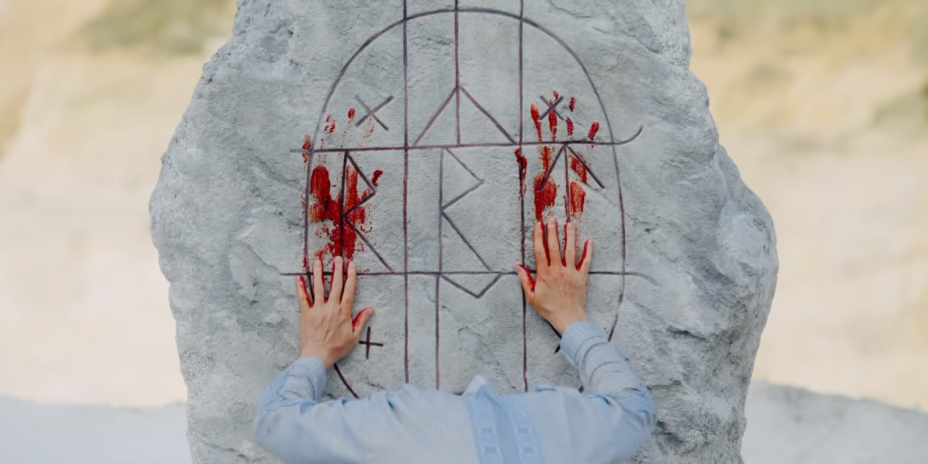
A24
It’s Dani that becomes that May Queen, this is her story. Dani starts this film destroyed by grief, trapped trying to please someone who refuses to even give her respect in return. She is alone, especially with Christian.
The Hårga give her a family. They give her the understanding and validation she needs. When Dani finds Christian cheating on her with a Swedish local, she bursts into violent sobs that are echoed by the Hårga women in an act of deep empathy. The film ends with every character non-native to the village burning, except Dani. As May Queen, she choses Christian to burn, and as he sets flame while sewed into a bear, Dani is freed.
Throughout the film, there is a motif of the color yellow. The tubes Dani’s sister uses to pump carbon monoxide into the lungs of her and her parents are yellow. The entrance to the Hårga village is yellow. The triangular building where Christian burns is yellow. Yellow is a happy, bright color, but in Midsommar it represents death.
There’s much more symbolism throughout the film. Bears in Swedish culture represent evil and dishonesty. Christian’s evil and dishonesty throughout the film is punished by him literally taking on the skin of a bear, and being sent to Hell.
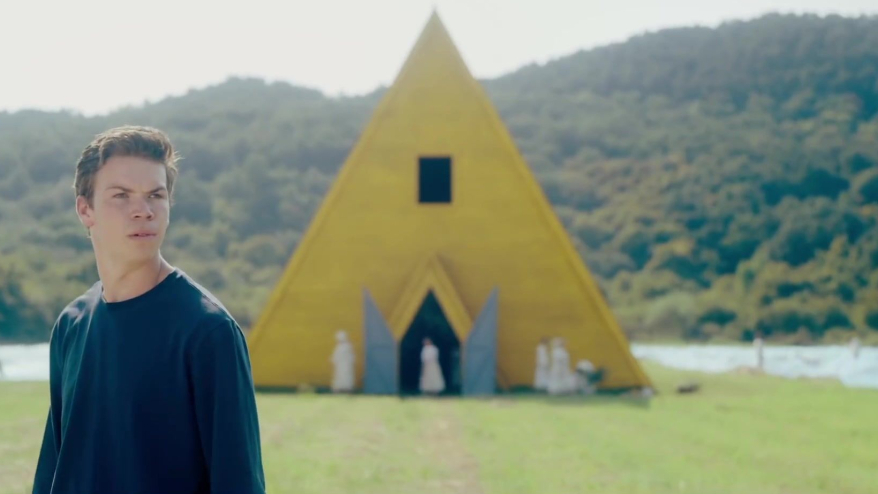
A24
This is a horror movie, but the way it looks is very non-traditional to the genre. The Hårgan village never gets dark, flooded with white traditional clothing and bright greenery. This constant light makes the disturbing moments even more disturbing, as the contrast between the subject matter and the way it’s being presented feels wrong. Not to mention, the shots are gorgeous. When the crew enter Halsingland, the camera flips 180 degrees to demonstrate that we are entering a very different world. This is both effective and looks super cool, so win-win.
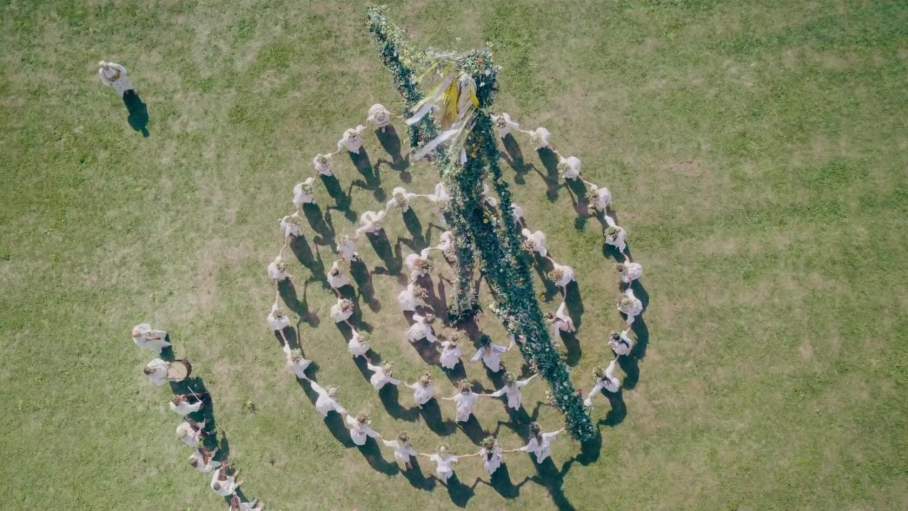
A24
This movie is this kind of my dark otherworldly wish fulfillment. I related to Dani in so many moments. Her grief, her desperation to keep a dying relationship alive, her pushing down her emotions for the comfort of others. A lot of the things Dani felt and went through throughout this film were things that I’ve felt in the past year, and there was something so human about the way they were portrayed. By the end of the film, Dani’s allowed freedom from that guilt and repression and desperation, and I saw myself in that too. Watching this film is the definition of cathartic.
Like Aster’s other work, Midsommar takes very real pain and makes it as big as it feels. Definitely recommend. 4.5/5 stars

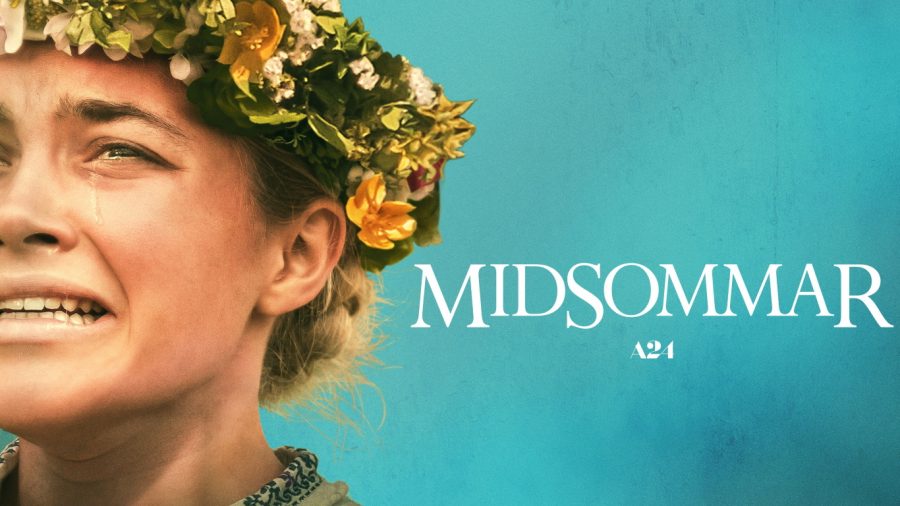





Morgan Chase • Aug 6, 2021 at 7:40 am
I very much enjoyed your perspective on the film!